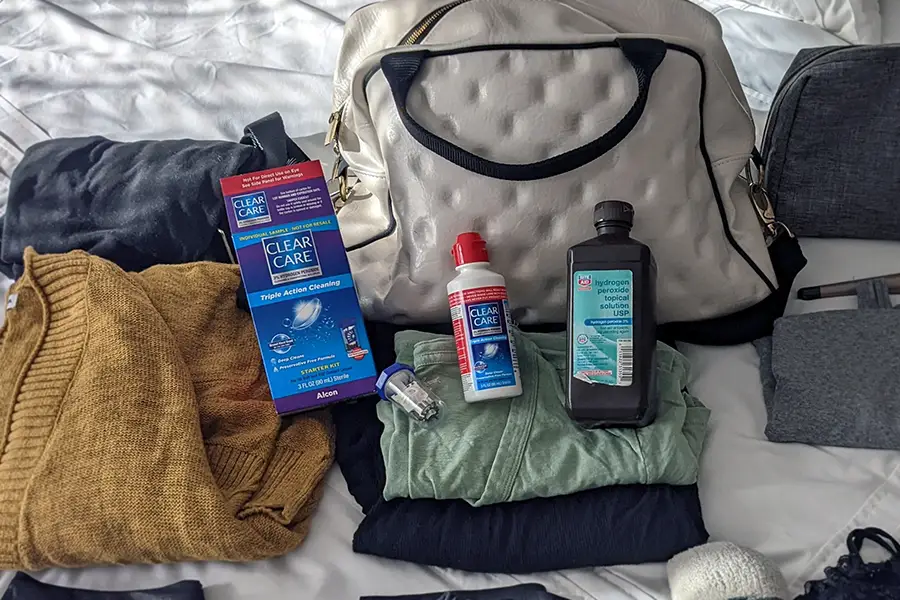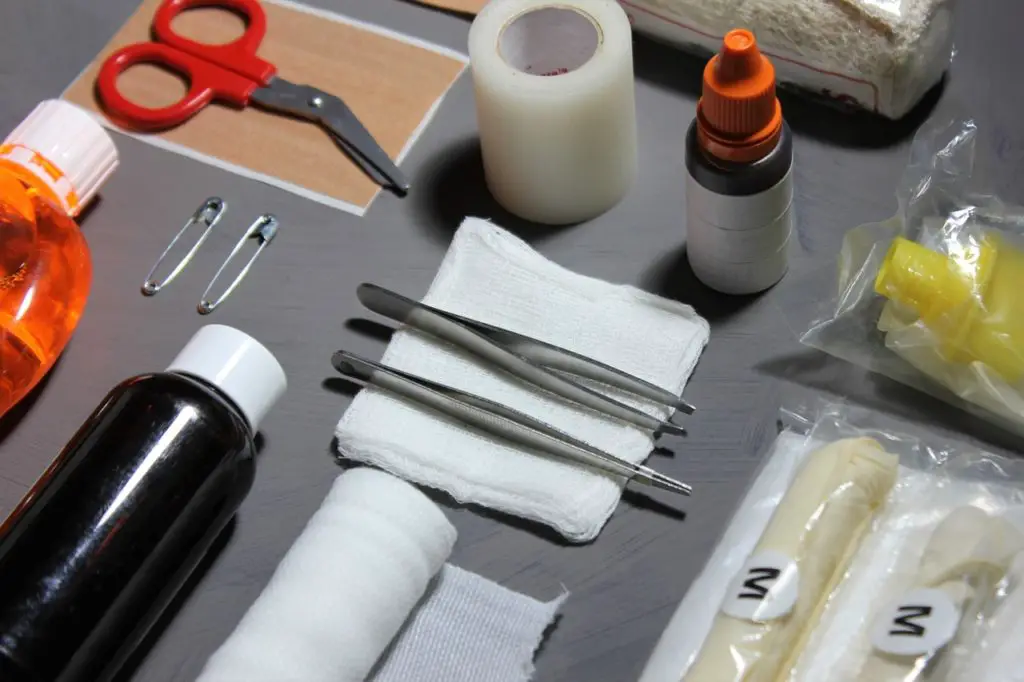When you’re packing and preparing for a flight there are always a few items that cause you to pause and wonder if you can take them on the plane. One of those items might be hydrogen peroxide. There are several reasons why you might want to bring hydrogen peroxide with you. Maybe it’s for your first aid kit? Or maybe your contact solution contains hydrogen peroxide? We’ll explain all you need to know about taking hydrogen peroxide on a plane in the following article.
The quick answer is yes, hydrogen peroxide is permitted in both carry-on and checked baggage for medical purposes but you’re probably better off leaving it at home. There are a few gray areas that you should be aware of. Here’s what I found.
Hydrogen peroxide is not listed on the TSA’s What Can I Bring website, so I reached out to AskTSA to find out. The answer I received was:
Medically necessary liquids, such as contact solution, are allowed in carry-on bags. The bottles can be over 3.4 ounces each. Although the bottles don’t need to be packed in your liquids bag, they should be separated from your other belongings prior to X-ray screening. Please let our officers know you have this item and place it in a separate bin for X-ray screening. Please note that any liquid, including items deemed medically-necessary, that alarms during screening and tests positive for certain chemicals, won’t be allowed through the checkpoint.
Further digging on the TSA website reinforced what AskTSA stated. On a web page discussing disabilities and medical conditions, it’s stated that medically necessary liquids are exempt from the 3-1-1 liquid rule (in “reasonable” quantities) but that those liquids need to be declared to the TSA officer and separated from your other belongings before the screening begins. It also stated that medical liquids don’t need to be placed in a ziplock bag, although it’s probably a good idea just in case.
Where it’s unclear
Here’s the gray area: if the liquid causes an alarm or is suspect, they may x-ray it or perform additional screening. The TSA agents may choose to confiscate the item at their discretion if there are any doubts in their minds. Contact solution may be considered medically necessary, but hair dye with hydrogen peroxide may not.
If a liquid, gel, or aerosol declared as medically necessary alarms, then it may require additional screening and may not be allowed.
Several people have reported that their products containing hydrogen peroxide were confiscated during the screening process, so know that it does happen. What we don’t know is if the bottle wasn’t labeled, or there were some other reasons for the product being questioned. For international flights, check with your specific airlines in case they have unique requirements.
Also note that this pertains to your typical household hydrogen peroxide, which is usually between 3%-9%. Higher concentrations of hydrogen peroxide will need special approval by the airline.
Related: Can I Bring Hand Sanitizer on a Plane? (2022)
What makes hydrogen peroxide potentially dangerous?
So, what’s the big deal with hydrogen peroxide? Why is it even a problem? Typical household hydrogen peroxide is usually 97% water and that small concentration makes it safe for everyday use. However, hydrogen peroxide is an oxidizing agent, meaning that it has the ability to transfer electrons, which can lead to explosions or combustion. I’m not a chemist so here’s what Wikipedia states:
An oxidizing agent, also known as an oxidant or oxidizer, is a substance that has the ability to oxidize other substances — in other words to accept their electrons. Common oxidizing agents are oxygen, hydrogen peroxide and the halogens.
In one sense, an oxidizing agent is a chemical species that undergoes a chemical reaction in which it gains one or more electrons. In that sense, it is one component in an oxidation–reduction (redox) reaction. In the second sense, an oxidizing agent is a chemical species that transfers electronegative atoms, usually oxygen, to a substrate. Combustion, many explosives, and organic redox reactions involve atom-transfer reactions.
Source: https://en.wikipedia.org/wiki/Oxidizing_agent
What items contain hydrogen peroxide?
- The most common form of hydrogen peroxide are the brown bottles found in many medicine cabinets. It is commonly used as an antiseptic, meaning it’s applied to cuts and wounds to clean it and kill bacteria. It’s kept in opaque bottles because it can’t be exposed to sunlight.
- Hydrogen peroxide is also used with contacts to clean and store them. Clear Care is the most common brand found in the purple packaging.
- Hydrogen peroxide is used for many reasons in oral care. It has whittening properties and it’s ability to disinfect means that it can be used as a mouthwash. It can also be found in toothpaste, but this wont cause any issues flying as long as you follow TSA’s other rules.
- Hair dyes and bleaches can contain hydrogen peroxide.
- Some cleaning agents contain hydrogen peroxide. Many people DIY there own cleaners, but there are premade versions available for purchase. For example, Lysol carries a line of bleach free products that use it.
Related: Can You Bring Tweezers on a Plane (Scissors?, Nail Clippers? Razors?)
Tips for taking hydrogen peroxide on a plane
- If you are taking more than 3.4 ounces, be sure to declare it to the TSA officer.
- If you’re taking less than 3.4 ounces, it’s probably best to follow the 3-1-1 rule.
- Either way, be sure it’s clearly labeled.
- Be sure to check with your specific airline prior to your flight, especially when travelling internationally.
- Since hydrogen peroxide can be questionable, leave it at home and buy it at your destination if you can live without it.
What is your experience with hydrogen peroxide on a plane? Have you flown with it? Let us know in the comments.





My large bottle of Clear Care was tossed by the TSA agent. I didn’t have a checked bag. I kept it separate, I declared it as medically necessary…
Best bet – Buy peroxide when you arrive at your destination. TSA considers this to be a gray area, since it is a precursor to some explosives (example: shoe bomber) so save yourself some frustration and don’t bring it on the plane.